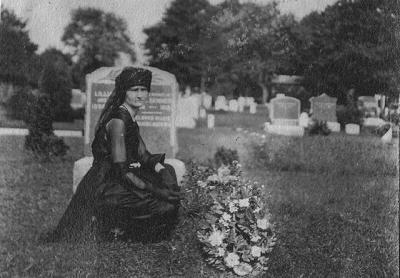More Deadly Than the Plague

Hilary Osborn Malecki, of the Wainscott Osborn family, will give a talk on the 1918 influenza pandemic on Friday, Feb. 23, at 7 p.m., the second in a lecture series on medical topics offered by the East Hampton Historical Society at Clinton Academy.
In addition to her abiding interest in the family attic, filled with old diaries and letters, Ms. Malecki is an intrepid investigator, having earned a bachelor’s degree in criminal justice from the University of Maryland and having had a career at the Naval Criminal Investigative Service in Washington, D.C.
It was while going through her grandfather and great-uncle’s letters home to Wainscott from abroad during World War I that she started seeing references to the influenza, or “Spanish flu” as it was then sometimes referred to (despite, according to epidemiologists, most likely having originated in China). Her efforts to find other corresponding and corroborative data led her to realize that the pandemic of 1918 and 1919 had reaped a more terrible harvest here than she had previously understood.
At a time when the global population was about 1.9 billion people, the flu of 1918 infected some 500 million people worldwide, and, depending on who you ask, killed between 20 and 50 million people. Some 675,000 of them were Americans. Philadelphia was the hardest hit city in the United States, losing 12,000 people. The influenza of 1918-19 was more deadly than the Bubonic Plague, more deadly than the Great War itself.
Ms. Malecki feels that these figures would have been lower had it not been for the unfortunate confluence of circumstances during the last year of World War I, with millions displaced in Europe and legions of American soldiers flooding port cities in the summer and autumn of 1918 to travel to France, then packing the ports of France and England again to head home after the war’s end as the year drew to a close.
Some who suffered collapsed dead on the street, or were found dead in bed or in chairs, without ever having appeared sick. On the other hand, they could sicken over weeks and then slowly go into respiratory failure, as their lungs filled with fluid.
Here on the East End, at the height of the pandemic in the autumn of 1918, Sunday-school classes were canceled and the John Jermain Library closed until further notice. Public-health instructions were published in the pages of The Star, including a warning in the Oct. 25, 1918, edition, from Dr. Dave Edwards, the subject of the last medical-related historical-society lecture: In extra-large print, with exclamation marks, Dr. Edwards warned East Hampton that it was actually illegal to cough or sneeze without “turning away and covering the mouth and nose with a handkerchief,” and that it was also illegal to “spit on the floor of any public place, or public conveyance, or the sidewalk.” He urged readers: “Save yourself and save others!”
Historians say that influenza was carried across the world by ship and then, from port, overland by railway. Ms. Malecki said that this was also true on Long Island, where Southold was one of the hardest-hit towns, with one of the highest death rates on the East End. One of the flu deaths recorded in The Star was that of a commercial fisherman who worked on one of the menhaden steamers out of Promised Land, whose contracting of the illness was attributed to a stop at port in Connecticut.
Babies, children, and pregnant women were said to be the most in danger, but adults of childbearing age were struck in the greatest numbers. Those who were left to nurse the ill were often those over 50.
The first wave on the East End began in September 2018, peaked by Oct. 21, and went down by Nov. 25. Then, between January and March 1919, a second wave appeared, with March being the most dangerous month in East Hampton, when there were 130 cases within town boundaries. There was a brief third wave after that.
The Star carried many terse but heart-wrenching accounts of deaths from influenza in East Hampton, including those of children in Springs and Bridgehampton. Even Clifford Boughton, the son of the former editor of The East Hampton Star, died of the flu. As a historian at the time observed, despite all the public-health warnings, “The disease moved too fast, arrived, flourished, and was gone before many people had time to realize just how great was the danger.”within town boundaries. There was a brief third wave after that.
The Star carried many terse but heart-wrenching accounts of deaths from influenza in East Hampton, including those of children in Springs and Bridgehampton. Even Clifford Boughton, the son of the former editor of The East Hampton Star, died of the flu. As a historian at the time observed, despite
all the public-health warnings, “The disease moved too fast, arrived, flourished, and was gone before many people had time to realize just how great was the danger.”
